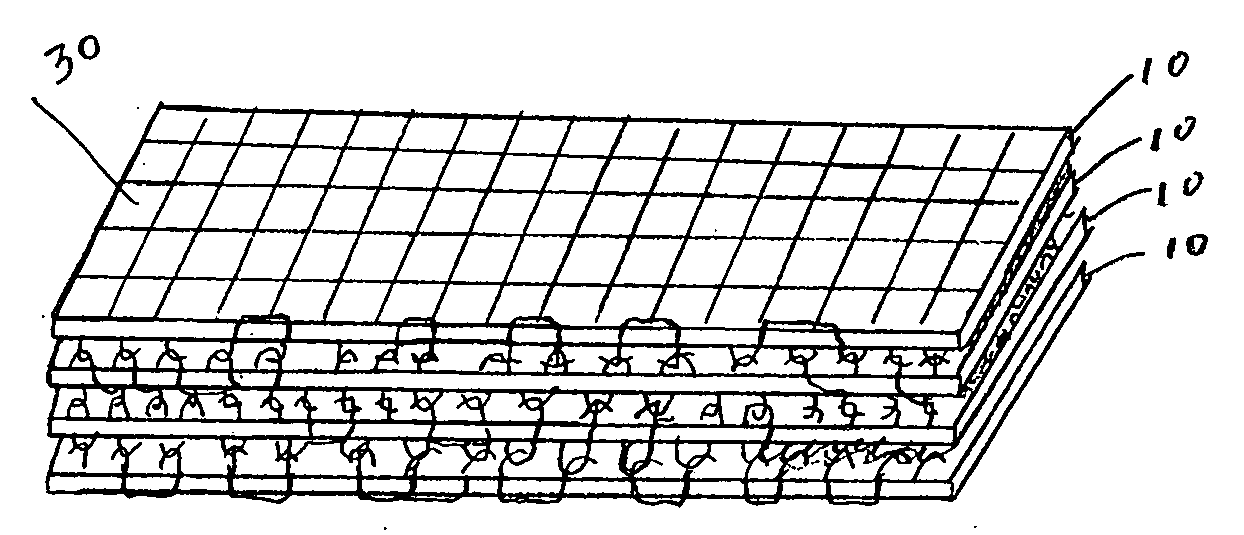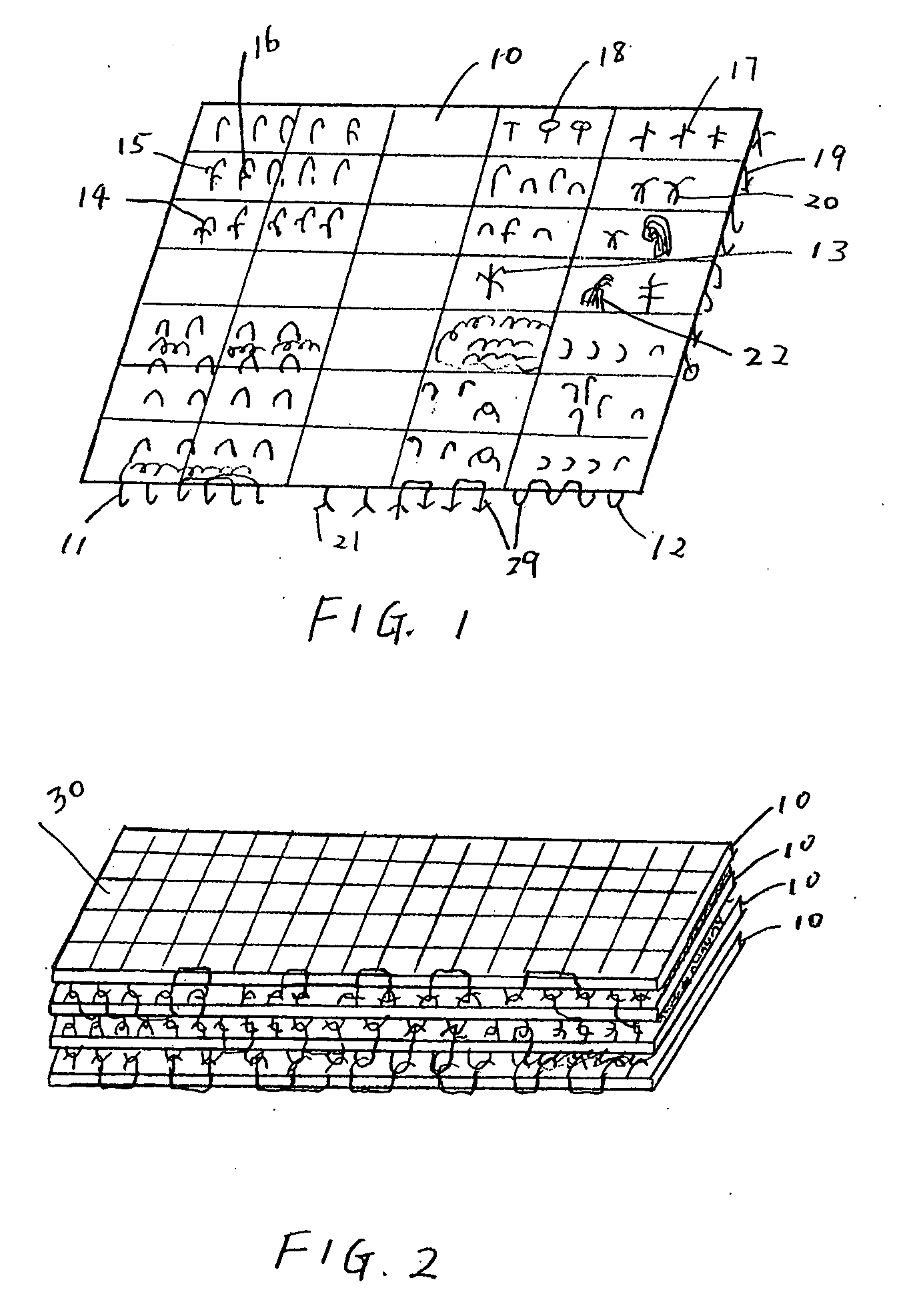Fiber Products, Prepregs, Composites and Method of Producing Same
- Summary
- Abstract
- Description
- Claims
- Application Information
AI Technical Summary
Benefits of technology
Problems solved by technology
Method used
Image
Examples
Embodiment Construction
[0072]Referring to FIG. 1, a sheet 10 of fibers or film substance has fastener components 29 including hook 11, loop 12, anchor-like hook 13, fish hook 14, fork 17 and 21, big head 18, arrow-like hook 19 and group loop 20 fastening components on both side of the sheet. A hook may have multiple hooks 15 and 16 like a chain of hooks. A hook may comprise several threads in different length 22. The said fastening components 29 may have a pattern, an array on the sheet with specified directions. The said fastening components 29 may be randomly scatter or mix on the sheet.
[0073]As shown in FIG. 2, several sheets 10 are laid together layer-by layer to become a fiber product or a preform. The hook and loop, hook and hook and other fastening components engage each other to become the trans-plies and interlayer reinforcements. The top and bottom sheet may have said fastening components on only one side of the sheets.
[0074]FIG. 3 shows resin 35 infiltrates the fiber sheet 10 and get a piece of...
PUM
| Property | Measurement | Unit |
|---|---|---|
| Fraction | aaaaa | aaaaa |
| Angle | aaaaa | aaaaa |
| Thickness | aaaaa | aaaaa |
Abstract
Description
Claims
Application Information
 Login to View More
Login to View More - R&D
- Intellectual Property
- Life Sciences
- Materials
- Tech Scout
- Unparalleled Data Quality
- Higher Quality Content
- 60% Fewer Hallucinations
Browse by: Latest US Patents, China's latest patents, Technical Efficacy Thesaurus, Application Domain, Technology Topic, Popular Technical Reports.
© 2025 PatSnap. All rights reserved.Legal|Privacy policy|Modern Slavery Act Transparency Statement|Sitemap|About US| Contact US: help@patsnap.com



